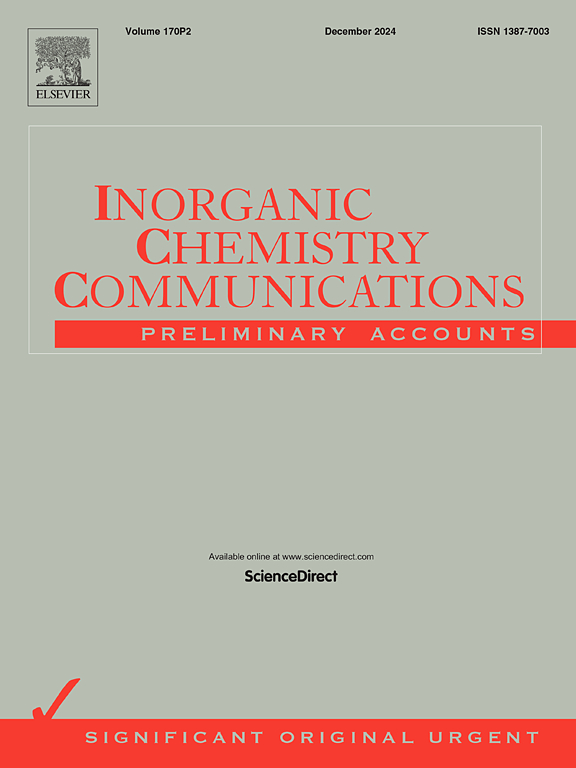非苯类碳同素异形体上N2和NRR中间体吸附特性的单原子催化研究
IF 4.4
3区 化学
Q1 CHEMISTRY, INORGANIC & NUCLEAR
引用次数: 0
摘要
本文采用密度泛函理论计算方法,研究了非苯类碳同素异形体(BPN)在TM(从Sc到Ni的3d基团)上对N2和氮还原反应(NRR)中间体的吸附行为。在探索了嵌入在BPN上两个不同缺陷位点的过渡金属原子的稳定性之后,阐明了BPN的基本电子性质(如原子电荷)和其他化学键性质(如(COHP和COBI))。然后,研究了分子吸附行为,确定了最佳材料和可能的NRR途径。我们的研究结果表明,N2分子是端对端吸附的,这意味着合成NH3可能主要遵循远端/交替(或它们的混合物)途径,也受到反应中间体键长度变化的支持,这支持了反应过程中N-N键的断裂。讨论了利用TM裸嵌层化学键描述符预测NNH*吸附能的方法。这项工作最引人注目的方面是,ICOBI是一个非常有效的描述符,用于预测NNH*中间体的吸附能,这对NRR过程至关重要。最后,Fe-BPN层预测具有最佳的选择性,有利于NRR,而Sc-BPN层促进HER。本文章由计算机程序翻译,如有差异,请以英文原文为准。

Single atom catalysis perspective to reveal N2 and NRR intermediate adsorption properties on non-benzenoid carbon allotrope: A DFT study
In this work, the adsorption behavior of N2 and the Nitrogen Reduction Reaction (NRR) intermediates have been explored on TM (3d group from Sc to Ni) embedded non-benzenoid Carbon Allotrope (BPN) employing density functional theory calculations. Following the exploration of the stability of the transition metal atoms embedded on two different defective sites on BPN, the fundamental electronic properties, such as atomic charges, and other chemical bonding properties, such as (COHP and COBI) have been elucidated. Then, the molecular adsorption behaviors were investigated to determine the best material and possible NRR pathway. Our findings show that the N2 molecule is adsorbed in end-on geometry, which implies that the distal/alternate (or their mixture) pathway might be mostly followed to synthesize NH3, also supported by the bond length variations of reaction intermediates, which support N-N bond scission during the reaction. A discussion was made to predict NNH* adsorption energy through chemical bonding descriptors belonging to the bare TM embedded layers. The most striking aspect of this work, ICOBI is a very effective descriptor for predicting the adsorption energy of the NNH* intermediate, which is crucial for the NRR process. Finally, Fe-BPN layer is predicted to have a best selectivity in favor of NRR, while Sc-BPN layer promotes HER.
求助全文
通过发布文献求助,成功后即可免费获取论文全文。
去求助
来源期刊

Inorganic Chemistry Communications
化学-无机化学与核化学
CiteScore
5.50
自引率
7.90%
发文量
1013
审稿时长
53 days
期刊介绍:
Launched in January 1998, Inorganic Chemistry Communications is an international journal dedicated to the rapid publication of short communications in the major areas of inorganic, organometallic and supramolecular chemistry. Topics include synthetic and reaction chemistry, kinetics and mechanisms of reactions, bioinorganic chemistry, photochemistry and the use of metal and organometallic compounds in stoichiometric and catalytic synthesis or organic compounds.
 求助内容:
求助内容: 应助结果提醒方式:
应助结果提醒方式:


